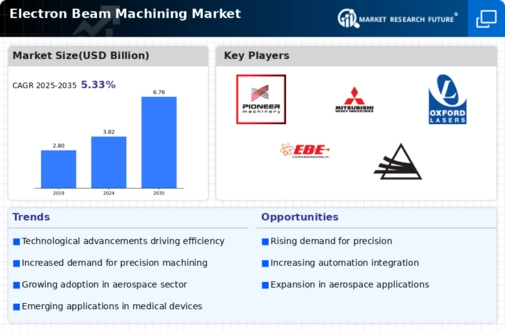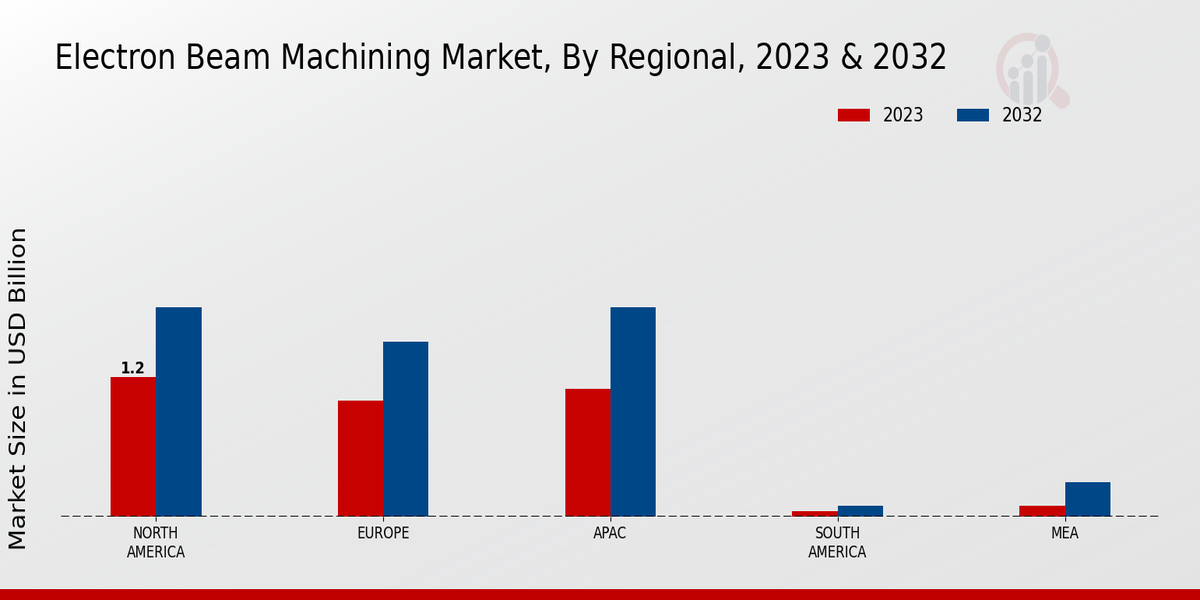Market Growth Projections
The Global Electron Beam Machining Market Industry is projected to experience substantial growth over the next decade. With a compound annual growth rate (CAGR) of 5.33% anticipated from 2025 to 2035, the market is expected to reach 6.76 USD Billion by 2035. This growth is driven by various factors, including technological advancements, increasing demand from key sectors, and the rising focus on sustainability. As industries continue to recognize the benefits of electron beam machining, the market is likely to expand, presenting opportunities for innovation and investment in this specialized machining technology.
Technological Advancements
The Global Electron Beam Machining Market Industry is experiencing rapid technological advancements, which enhance machining precision and efficiency. Innovations in electron beam technology, such as improved beam control and automation, allow for more intricate designs and faster production rates. For instance, the introduction of advanced electron optics has led to better focus and stability of the beam, resulting in reduced cycle times. These advancements are likely to attract more industries to adopt electron beam machining, contributing to the market's growth. As a result, the market is projected to reach 3.82 USD Billion in 2024, reflecting the increasing demand for high-precision machining solutions.
Growing Demand in Aerospace Sector
The aerospace sector is a significant driver of the Global Electron Beam Machining Market Industry, as it requires high-precision components that can withstand extreme conditions. Electron beam machining is particularly suited for manufacturing complex parts such as turbine blades and structural components, which are critical for aircraft performance. The increasing production rates in the aerospace industry, driven by rising air travel demand, further amplify the need for efficient machining processes. This trend is expected to bolster the market, with projections indicating a growth to 6.76 USD Billion by 2035, as aerospace manufacturers increasingly turn to electron beam machining for their production needs.
Emerging Markets and Global Expansion
Emerging markets are becoming increasingly relevant in the Global Electron Beam Machining Market Industry, as industrialization and technological advancements pave the way for growth. Regions such as Asia-Pacific and Latin America are witnessing a rise in manufacturing activities, creating new opportunities for electron beam machining applications. As these markets expand, the demand for high-precision machining solutions is expected to grow, driven by sectors such as automotive and electronics. The global expansion of electron beam machining capabilities may lead to a more competitive landscape, further propelling market growth in the coming years.
Environmental Considerations and Sustainability
Sustainability concerns are increasingly influencing the Global Electron Beam Machining Market Industry, as manufacturers seek eco-friendly production methods. Electron beam machining is known for its minimal waste generation and energy efficiency compared to traditional machining processes. The ability to reduce the environmental footprint while maintaining high precision makes this technology appealing to industries aiming to meet stringent environmental regulations. As companies prioritize sustainable practices, the adoption of electron beam machining is likely to increase, further driving market growth. This shift towards greener manufacturing processes may play a crucial role in shaping the industry's future.
Rising Adoption in Medical Device Manufacturing
The Global Electron Beam Machining Market Industry is witnessing a surge in adoption within the medical device manufacturing sector. This machining technology is particularly effective for producing intricate components used in surgical instruments and implants, where precision is paramount. The ability to achieve high-quality finishes and tight tolerances makes electron beam machining an attractive option for medical manufacturers. As the global healthcare sector expands, driven by an aging population and increasing health awareness, the demand for advanced medical devices is likely to rise. Consequently, this trend is expected to contribute positively to the market's growth trajectory in the coming years.







